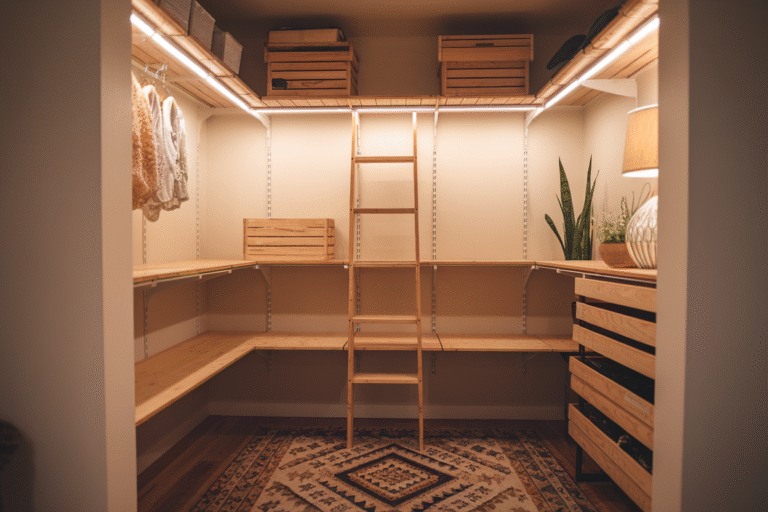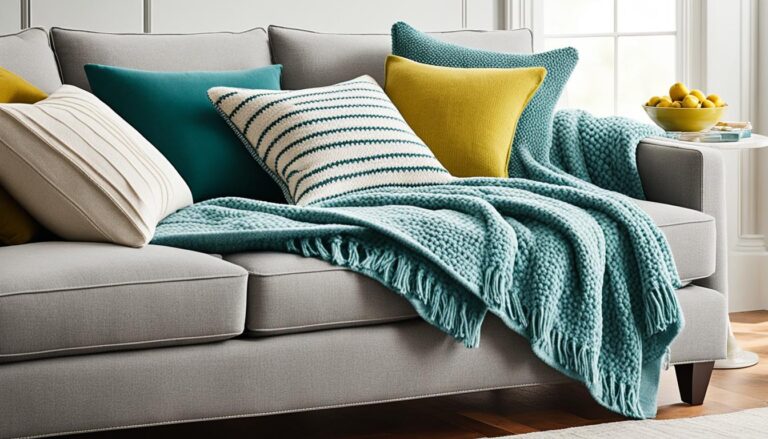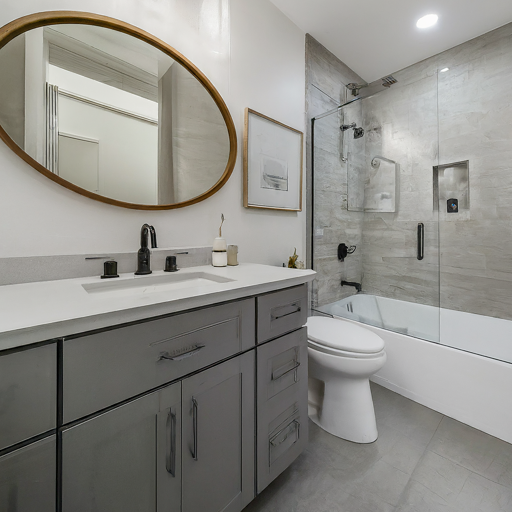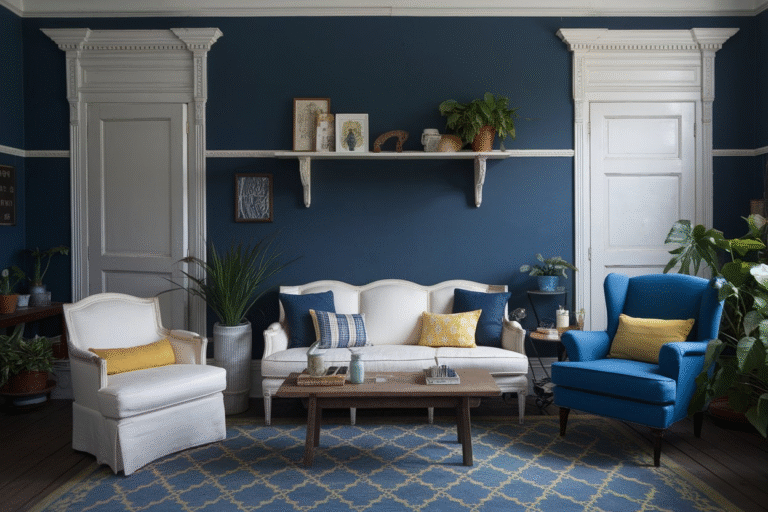19 Home Office Layout Ideas
When it comes to setting up a home office, the layout can make or break your productivity and comfort. You could have the fanciest chair or the sleekest desk, but if your space isn’t arranged thoughtfully, your workday might feel like trying to swim upstream in molasses.
I’ve spent countless hours tweaking my own setup, testing what works and what flops, and I’m here to share those secrets with you. These 19 home office layout ideas will help you craft a space that feels as good as it looks — all while boosting your focus and creativity.
1. The Classic Desk-Centric Layout: Keep It Simple, Keep It Focused
Sometimes the best place to start is the simplest one. Placing your desk facing a wall or window can create a no-nonsense zone for concentration. Facing the wall reduces distractions, while facing a window invites natural light and inspiration. A large desk with clean lines and minimal clutter keeps your workspace grounded and productive.
In my early days, I found that facing a blank wall felt a bit like staring into a void, so I switched to positioning my desk near a window. Suddenly, the rustling leaves and changing skies became part of my workflow soundtrack.
2. The Corner Nook: Maximize Small Spaces
If you’re working with limited square footage, a corner layout can be your best friend. Nestle your desk into a corner to use space efficiently and carve out a dedicated zone that feels private. Add floating shelves above to keep essentials at arm’s reach without crowding your desk surface.
This setup worked wonders when I had a tiny apartment. The corner nook felt like my own little command center — cozy but functional.
3. The Floating Desk: Open Up the Room
Mounting a floating desk on the wall can open up floor space and make a small room appear larger. This minimalist look encourages you to keep only the essentials on your desk and tuck away everything else. Plus, cleaning under a floating desk is a breeze.
I remember transitioning to a floating desk when my cat decided my cables were the new jungle gym. Clearing floor space made it harder for him to launch surprise attacks on my wires.
4. The L-Shaped Layout: Double Your Surface, Double Your Workflow
The L-shaped desk is a classic for a reason. It provides ample surface area without dominating the room. One side can hold your computer and tech gear; the other can be reserved for writing, brainstorming, or layout work.
I used an L-shaped setup when juggling multiple projects. It was like having two separate desks in one space, allowing me to switch gears without shuffling papers endlessly.
5. The Standing Desk Zone: Break Free from the Chair
Adding a standing desk or a height-adjustable desk section to your layout can do wonders for your health and focus. Standing helps avoid the mid-afternoon slump and encourages more movement during the day.
When I first tried a standing desk, I felt like I was training for a marathon. But over time, I noticed my back pain eased, and my energy stayed steadier throughout long work sessions.
6. The Window Seat Workspace: Light Meets Comfort
If your home office has a wide window ledge or bench, turn it into a cozy window seat workspace. Add cushions and a small side table or lap desk for a flexible spot where you can read, brainstorm, or do light work bathed in natural light.
This layout is perfect for creative work or meetings over Zoom. When I tried this, it felt less like work and more like having coffee in a café — but with my pajamas on.
7. The Collaborative Corner: Invite Connection
If you share your office or want a space for quick meetings or brainstorming, consider a small seating area with chairs or a loveseat near your desk. This makes it easy to collaborate without sacrificing your personal workspace.
In my experience, having a dedicated corner for chats and planning saved me from dragging my laptop across rooms for every quick call.
8. The Minimalist Zen Den: Clear Space, Clear Mind
Sometimes less is more. A minimalist layout with just a desk, a comfortable chair, and one or two storage solutions can create a serene environment that reduces decision fatigue.
After a particularly chaotic month, I stripped my office down to the bare essentials. The quiet simplicity helped me reset and focus like never before.
9. The Multi-Functional Room: Office Meets Living Space
In smaller homes, your office might double as a guest room or hobby space. Using a fold-out desk, wall bed, or mobile furniture allows your office to adapt without losing functionality.
I lived this for years. The key was clever storage and furniture that could hide away when guests came over, so I didn’t have to pack up my work every time someone visited.
10. The Tech Hub: Cable Management Meets Command Center
Your layout should consider the placement of outlets, routers, and devices. Create a tech hub near power sources and hide cables with organizers or conduits to maintain a clean look.
Nothing ruins a sleek layout like a spaghetti monster of wires. I spent an entire weekend just organizing cables — the payoff was a workspace that looked as professional as it felt.
11. The Green Workspace: Nature’s Productivity Booster
Incorporate plants into your layout. Position your desk to enjoy views of greenery, or add potted plants around your work area. Plants improve air quality and reduce stress.
I found that even a small succulent on my desk brought a surprising amount of calm and focus during hectic days.
12. The Library Lounge: Bookshelf as a Divider
Use a tall bookshelf as a room divider to separate your office from the rest of your home. It doubles as storage and creates a cozy, library-like atmosphere.
I partitioned my office nook this way and suddenly felt like I had a private study, even in a shared apartment.
13. The Creative Studio: Open Space with Inspiration Walls
If your work is hands-on or creative, an open layout with ample wall space for inspiration boards, sketches, or whiteboards can keep ideas flowing.
In my early art days, having a wall covered in pinned sketches was like a visual diary that kept me motivated and accountable.
14. The Dual Desk Setup: Share or Separate Workspaces
If you work alongside a partner or roommate, two desks facing each other or placed side-by-side can create a shared but personal environment.
We tried this setup in a shared apartment. It was like having a coworking space at home, complete with its own energy and buzz.
15. The Cozy Reading Corner: Rest Between Tasks
Carve out a small corner with a comfy chair or beanbag for breaks, reading, or reflection. Separating your workspace and relaxation spot helps your mind shift gears.
When I built my reading nook, I found my breaks became more refreshing and less like sneaky procrastination.
16. The Open Floor Plan: Flexibility at Its Best
For larger spaces, keep your office open with modular furniture you can rearrange easily. This flexibility adapts to different tasks and moods.
I love this layout for when I need to switch from desk work to standing presentations or group discussions.
17. The Window-Backed Desk: Avoid Glare, Embrace the View
Position your desk so the window is to the side or behind your monitor to avoid screen glare while still enjoying natural light.
I learned this the hard way — staring into the sun at 2 pm isn’t the best way to proofread contracts.
18. The Storage-Centric Layout: Tidy Desk, Tidy Mind
Arrange your office with storage solutions like filing cabinets, drawers, and bins close by to keep clutter off your desk and workflow smooth.
There was a time when my desk was a mountain of papers. Getting organized with dedicated storage was like lifting a weight off my shoulders.
19. The Personalized Workspace: Reflect Your Style and Mood
Your office layout should reflect you — colors, decor, photos, and personal touches make it a place you want to be. Add art, rugs, or lighting that inspires you.
My office feels more “mine” when I add elements that make me smile or feel grounded. It’s my secret weapon against workday blues.
Final Thoughts: Your Home Office, Your Rules
There’s no one-size-fits-all answer to home office layouts. The best setup is one that fits your space, work style, and personality. Think of your home office like a garden: it needs the right soil, light, and care to bloom. Experiment with these ideas, don’t be afraid to move things around, and keep tweaking until it feels just right.
Remember, the goal isn’t just to look good on Zoom — it’s to create a workspace that invites focus, sparks creativity, and supports your wellbeing. So go ahead, get out there, and design your perfect home office haven.






